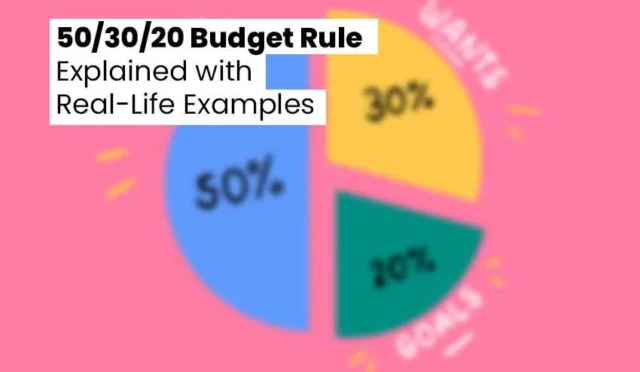If you’re building a location-independent career this year, the simplest way to move fast is to target remote jobs that let you work from anywhere. These roles are designed for async collaboration, clear deliverables, and measurable outcomes—so your value isn’t tied to a ZIP code. In this guide, you’ll see why remote jobs that let you work from anywhere are growing, how to choose the right path for your skills, which roles hire globally, and a practical 30-60-90 day plan to land your first—or next—offer.
Contents
- 1 Why Remote-First Roles Are Rising in 2025
- 2 How to Choose Among Remote Paths
- 3 Top Categories of Remote Work (With Starter Plays)
- 3.1 Software Engineering (Frontend, Backend, Full-Stack)
- 3.2 Data & Analytics (Data Analyst, Analytics Engineer)
- 3.3 Product Design & UX
- 3.4 Content & Copywriting
- 3.5 SEO & Content Strategy
- 3.6 Performance Marketing (Paid Social/Search)
- 3.7 Customer Success & Support
- 3.8 Sales (SDR/AE, Partnership)
- 3.9 Project & Operations Management
- 3.10 Education & Learning (Instructional Design, Teaching, Coaching)
- 3.11 Finance & Bookkeeping
- 3.12 Virtual Assistant & Executive Assistant
- 3.13 Cybersecurity (Blue/Red/Purple Team)
- 3.14 DevOps & Cloud
- 4 Skills That Compete Globally
- 5 Where to Find Real Opportunities
- 6 How to Package Your Proof
- 7 Application Scripts That Work
- 8 A 30-60-90 Day Plan to Land Offers
- 9 Compensation Signals and How to Read Them
- 10 Time Zones, Culture, and Collaboration
- 11 Tools You’ll Actually Use
- 12 Common Mistakes to Avoid
- 13 FAQs About Working From Anywhere
Why Remote-First Roles Are Rising in 2025
The companies thriving now build around outcomes, not office chairs. That shift favors remote jobs that let you work from anywhere for three reasons:
- Talent access: Teams hunt for the best person, not the closest person.
- Cost discipline: Distributed teams scale up or down without long leases.
- Tooling maturity: From version control to AI copilots, the stack finally supports deep async work.
For candidates, this means remote jobs that let you work from anywhere increasingly resemble productized outcomes: a clear problem, a timeline, and a definition of done. Your edge is the proof you bring—not your postcode.
How to Choose Among Remote Paths
Before browsing listings, map your fit using three filters. This will keep your search for remote jobs that let you work from anywhere focused and fast.
- Work style: Do you enjoy deep individual maker time (writing, coding, design) or coordinated projects (product, ops, customer success)?
- Proof you can show: Do you have artifacts—links, repos, dashboards, demos—that reduce hiring risk?
- Time-zone flexibility: Can you overlap 3–4 hours with target teams? That window is enough for most remote jobs that let you work from anywhere.
If a role doesn’t pass these filters, skip it. Momentum beats dabbling.
Top Categories of Remote Work (With Starter Plays)
Below are the most reliable funnels for remote jobs that let you work from anywhere. For each, you’ll get core responsibilities, proof ideas, and a “starter kit” to ship in a week.
Software Engineering (Frontend, Backend, Full-Stack)
What you do: Build features, fix bugs, review code, write tests, collaborate on architecture.
Proof: Live repo links, issue histories, performance improvements, small shipped apps.
Starter kit (7 days): One tiny app with tests, CI, and a README that explains trade-offs.
Data & Analytics (Data Analyst, Analytics Engineer)
What you do: Model data, build dashboards, write SQL/DBT, translate business questions into metrics.
Proof: Clean notebooks, before/after dashboards, metric definitions, a short insight memo.
Starter kit: A public dataset turned into a decision-ready dashboard.
Product Design & UX
What you do: Research, wireframes, flows, UI systems, usability tests, design handoff.
Proof: Case studies showing the problem → process → result; clickable prototypes.
Starter kit: Redesign a small flow and run 3 unmoderated tests; summarize insights.
Content & Copywriting
What you do: Articles, landing pages, email sequences, scripts.
Proof: Samples tied to outcomes—CTR lifts, signups, revenue per email.
Starter kit: A 1-page landing + email pair with two headline alternatives.
SEO & Content Strategy
What you do: Topic maps, briefs, internal linking, on-page fixes, performance reporting.
Proof: “From–to” graphs (impressions, clicks), ranked keywords, technical audits.
Starter kit: A 90-day content calendar plus one fully executed brief.
Performance Marketing (Paid Social/Search)
What you do: Campaign structure, creative testing, attribution, spend pacing.
Proof: Clear CAC/ROAS shifts, experiments log, creatives with iteration notes.
Starter kit: A sandbox campaign with a learning agenda and weekly recap.
Customer Success & Support
What you do: Onboarding, QBRs, churn defense, playbooks, help-center content.
Proof: Retention wins, time-to-value reductions, macro libraries, NPS improvements.
Starter kit: A 10-step onboarding SOP and a three-macro “fast fix” pack.
Sales (SDR/AE, Partnership)
What you do: Prospecting, discovery, demos, proposals, renewals.
Proof: Pipeline metrics, win stories, call snippets, objection-handling notes.
Starter kit: A 15-account target list with tailored first-touch scripts.
Project & Operations Management
What you do: Scope, timelines, dependencies, vendor management, runbooks.
Proof: Burn-down charts, risk logs, post-mortems that led to improvements.
Starter kit: A 6-week roadmap + RACI + communication cadence.
Education & Learning (Instructional Design, Teaching, Coaching)
What you do: Curriculum design, LMS authoring, short video lessons, assessments.
Proof: Sample modules, learning objectives, engagement or completion rates.
Starter kit: A micro-course with a 5-question quiz and a teacher’s guide.
Finance & Bookkeeping
What you do: Close processes, reconciliations, cash-flow forecasts, vendor management.
Proof: Checklists, month-end timelines, dashboards, audit-ready documentation.
Starter kit: A clean cash-flow model and a month-end checklist template.
Virtual Assistant & Executive Assistant
What you do: Calendars, inboxes, travel, meeting notes, research, vendor coordination.
Proof: Before/after inbox states, SOPs, scheduling logic, time-saved metrics.
Starter kit: A template pack: weekly brief, meeting notes, and follow-up macros.
Cybersecurity (Blue/Red/Purple Team)
What you do: Hardening, monitoring, incident response, security training.
Proof: Labs, write-ups, detection rules, automations, incident retros.
Starter kit: A home-lab detection demo with a concise readme.
DevOps & Cloud
What you do: CI/CD, IaC, observability, cost optimization.
Proof: Pipelines, Terraform modules, incident mean-time-to-recovery reductions.
Starter kit: Deploy a small service with infra-as-code and monitoring alerts.
Each lane above supports remote jobs that let you work from anywhere because outputs are digital, measurable, and reviewable async.
Skills That Compete Globally
To stand out for remote jobs that let you work from anywhere, stack these three skill clusters:
- Asynchronous communication: Write crisp updates; record short Looms; keep decisions visible.
- Outcome thinking: Tie work to metrics—load times, activation, retention, revenue, cost.
- Tool comfort: Version control, collaborative docs, task boards, and basic automation.
This mix says, “I’m easy to work with across time zones,” which is the most precious currency in remote jobs that let you work from anywhere.
Where to Find Real Opportunities
You can navigate three dependable funnels for remote jobs that let you work from anywhere:
- Company career pages: Follow remote-first brands that match your time zone and work style.
- Curated job boards: Niche boards (by role or stack) reduce noise and surface better fits.
- Warm intros and communities: Alumni groups, Slack/Discord communities, and old clients are the fastest way to get skipped ahead.
Create saved searches with alerts. Spend 20 minutes daily triaging leads. Your calendar should nudge you toward remote jobs that let you work from anywhere without doom-scrolling.
How to Package Your Proof
A tight portfolio beats a long one for remote jobs that let you work from anywhere. Use this structure:
- One-liner: “I help [who] achieve [result] with [skill].”
- Three best examples: Problem → approach → outcome, with one number that moved.
- Working style: Time-zone overlap, tools, and your cadence for updates.
- Call to action: “Want a 10-minute fit check? Here’s my calendar window.”
Make it scannable. The goal is to reduce risk in 60 seconds.
Application Scripts That Work
Use and adapt these for remote jobs that let you work from anywhere:
- First message:
“I saw you’re aiming for [result] with [constraint]. I can deliver [outcome] in [timeframe]. Here’s a 3-point plan and one relevant example. If helpful, I can share a one-page outline by tomorrow.” - Scope confirmation:
“To keep quality high, I’ll deliver A/B/C. This includes two feedback cycles and a recap. If you’d like D, we can add it as an optional extra.” - Follow-up (48 hours):
“Quick thought: if we start with X, we de-risk Y and cut two days off the timeline. Want a 10-minute call to pressure-test that?”
These scripts signal clarity and control—perfect for remote jobs that let you work from anywhere.
A 30-60-90 Day Plan to Land Offers
Days 1–30: Create Proof and Tighten Positioning
- Ship a small public artifact weekly: a case study, a mini-tool, a dashboard.
- Polish your one-pager and portfolio.
- Apply to 5 high-fit roles per day; personalize the first 120 words.
- Collect micro-testimonials as you deliver small wins.
This sprint seeds interviews for remote jobs that let you work from anywhere by making your value obvious.
Days 31–60: Systematize Outreach and Interviews
- Track responses, interview conversions, and time-to-offer.
- Record a 3-minute “how I work async” Loom; link it after first calls.
- Build two reusable proposals: one fixed-scope, one retainer.
With these assets, your pipeline for remote jobs that let you work from anywhere becomes predictable.
Days 61–90: Negotiate and Stabilize
- Ask for success metrics and define “done” in writing.
- Negotiate based on value, not hours; pair scope with outcomes.
- Set a weekly cadence for updates; propose a 30-day review.
By day 90, you should have at least one steady lane among remote jobs that let you work from anywhere and a repeatable system to add the next.
Compensation Signals and How to Read Them
To price well in remote jobs that let you work from anywhere, read signals, not guesses:
- Scope clarity: Ambiguity inflates hours—price accordingly or narrow scope.
- Urgency: Tighter timelines justify rush fees; propose phased delivery.
- Leverage: Your unique assets (tools, templates, playbooks) merit premium tiers.
- Proof: Before/after results command higher pay than credentials alone.
Every offer teaches you how to price the next. Document your logic.
Time Zones, Culture, and Collaboration
Succeeding in remote jobs that let you work from anywhere is mostly about working with humans you can’t see:
- Overlap windows: Promise, then protect, 3–4 hours of overlap on pivotal days.
- Communication ladders: Default to written updates; escalate to calls for ambiguity or risk.
- Cultural respect: Confirm holidays, weekends, and meeting norms early.
These basics keep projects moving when calendars don’t align.
Tools You’ll Actually Use
You don’t need a thousand apps to thrive in remote jobs that let you work from anywhere. A lean stack is enough:
- Docs & decisions: A shared document hub with version history.
- Tasks & timelines: A simple board; tags for owner, status, due date.
- Async video: Short Looms for demos, blockers, and recaps.
- Automation: A handful of rules that move updates and reminders where they belong.
Pick tools that vanish into the work.
Common Mistakes to Avoid
- Applying everywhere: Spray-and-pray wastes time; aim for 80% match.
- Portfolio dumps: Three great examples beat twelve random ones.
- Fuzzy scopes: Put deliverables, timelines, and revision logic in writing.
- Slow responses: In remote jobs that let you work from anywhere, speed signals reliability.
- Vanity metrics: Tie your story to outcomes the business cares about.
Cut these and your signal jumps immediately.
FAQs About Working From Anywhere
Do I need overlapping time zones?
A 3–4-hour overlap is plenty for most remote jobs that let you work from anywhere. The rest can be async with solid updates.
Should I freelance first or go full-time?
Either works. Freelancing proves outcomes quickly; full-time compounds domain knowledge. Many candidates mix both while testing markets.
How do I explain a career change?
Translate past wins into the target role’s outcomes. A short portfolio piece that mirrors the job beats a long résumé.
What if I’m new and have no proof?
Create it. Ship a small project in public, contribute to an open source or community template, or run a micro-engagement for a local org.
You don’t need permission to build a location-independent career—you need proof and a system. Focus on remote jobs that let you work from anywhere, choose a lane where you can show outcomes fast, and run the 30-60-90 plan until the pipeline clicks. With clear scopes, clean communication, and steady artifacts, you’ll turn intent into offers—and you’ll do it from wherever you want.
All of these are legitimate work and travel programs for students—what matters is that you commit early, keep paperwork tidy, and show up ready to contribute. Do that, and 2025 won’t just be a year abroad; it will be the year you grow up fast, earn real skills, and collect stories you’ll tell for the rest of your life.
Ready to take off? Explore our Work & Travel guides for program picks, timelines, budgets, and visa tips:
Explore the Work & Travel category →




